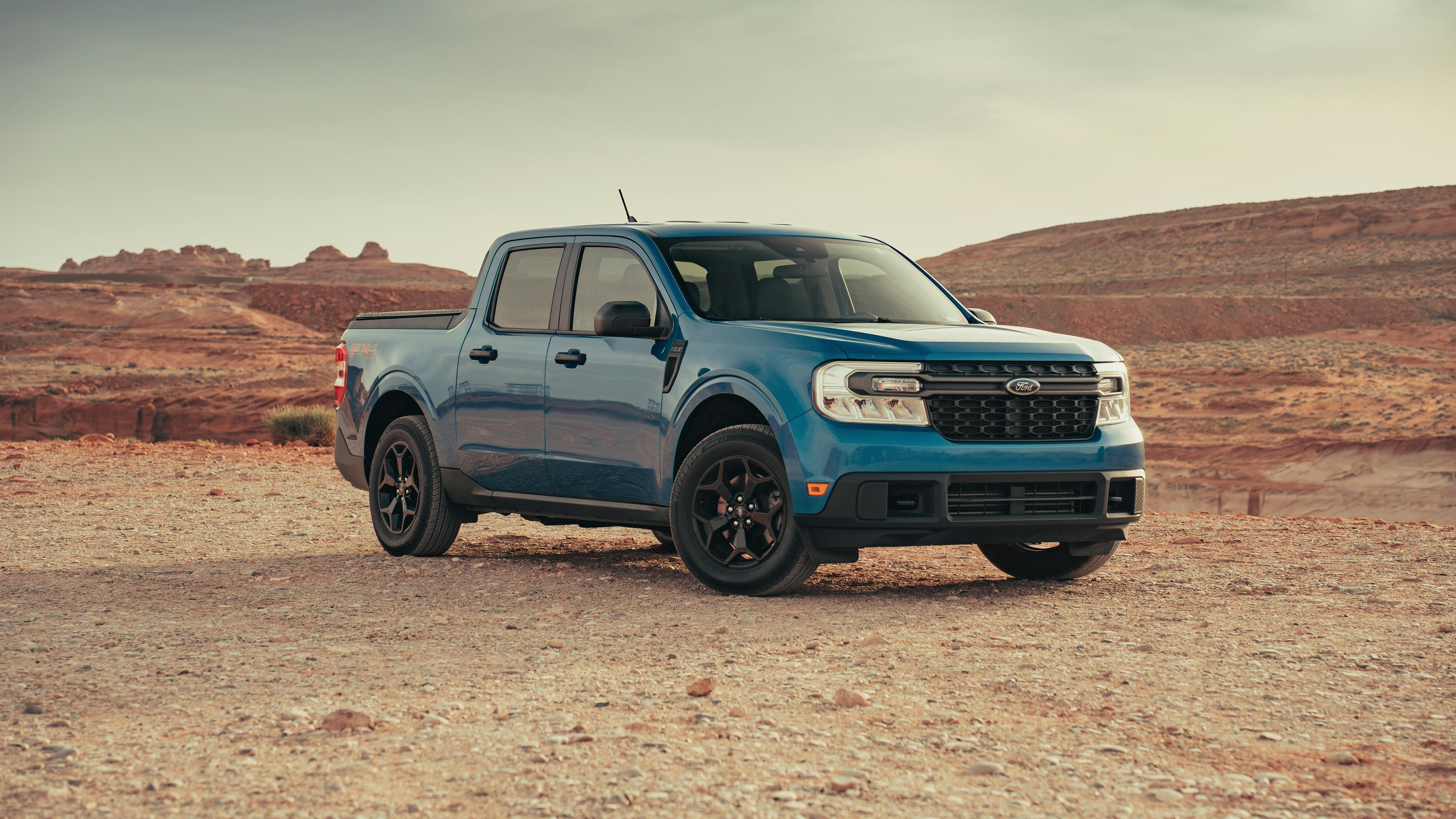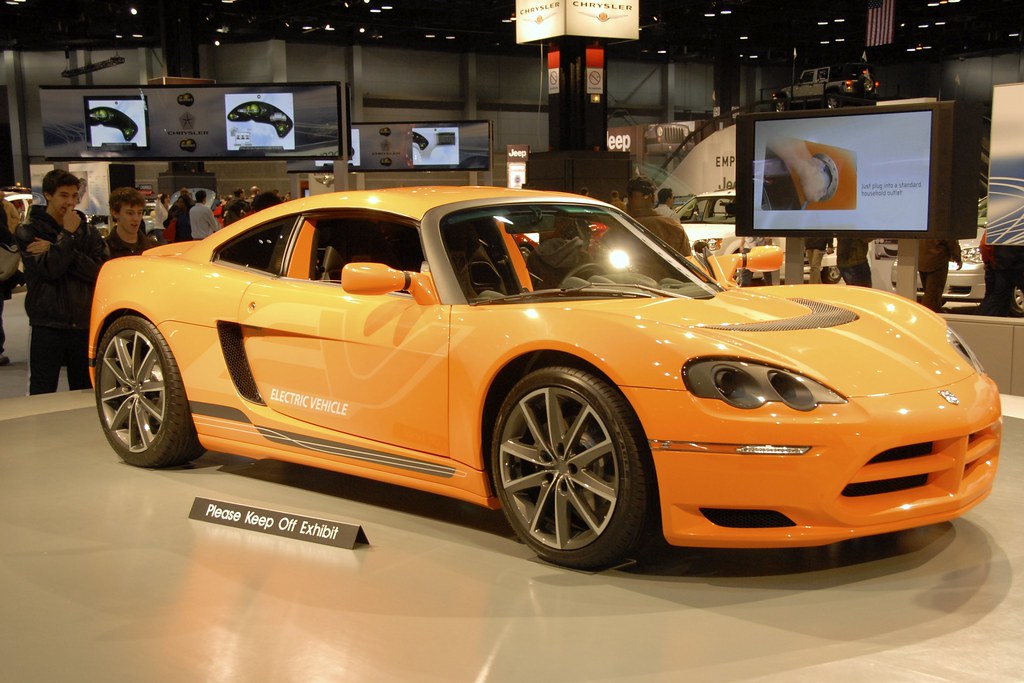
The automotive landscape is undergoing a seismic shift, one that is proving increasingly disheartening for purists and performance enthusiasts alike. For decades, sports cars have been the beating heart of innovation and excitement in the industry, offering a thrilling blend of agility, power, and unadulterated driving pleasure. Yet, a disquieting trend has emerged, seeing many fun and flashy coupes and convertibles becoming less popular, leading to their quiet, or sometimes not-so-quiet, discontinuation.
This isn’t merely a fleeting market fluctuation; it’s a complex confluence of economic realities, evolving consumer preferences, and mounting regulatory pressures that are reshaping vehicle portfolios at an unprecedented pace. The next generation of buyers, facing inflated housing markets, significant college loan debts, and stalled wage growth, often finds the exhilarating price tags of new sports cars simply out of reach. This affordability crisis, coupled with a broader pivot towards practical, affordable, and increasingly electrified vehicles, paints a stark picture for the future of the combustion-engine sports car.
As manufacturers sadly lean into SUVs and electric vehicles, some of the most iconic names in performance cars are headed for retirement, marking the end of an era. This article will take an in-depth look at eleven once-hot sports cars that enthusiasts just don’t race anymore, dissecting the specific reasons behind their departure and exploring the broader implications for the automotive world. We begin our journey by mourning the first six legends that are fading into history.
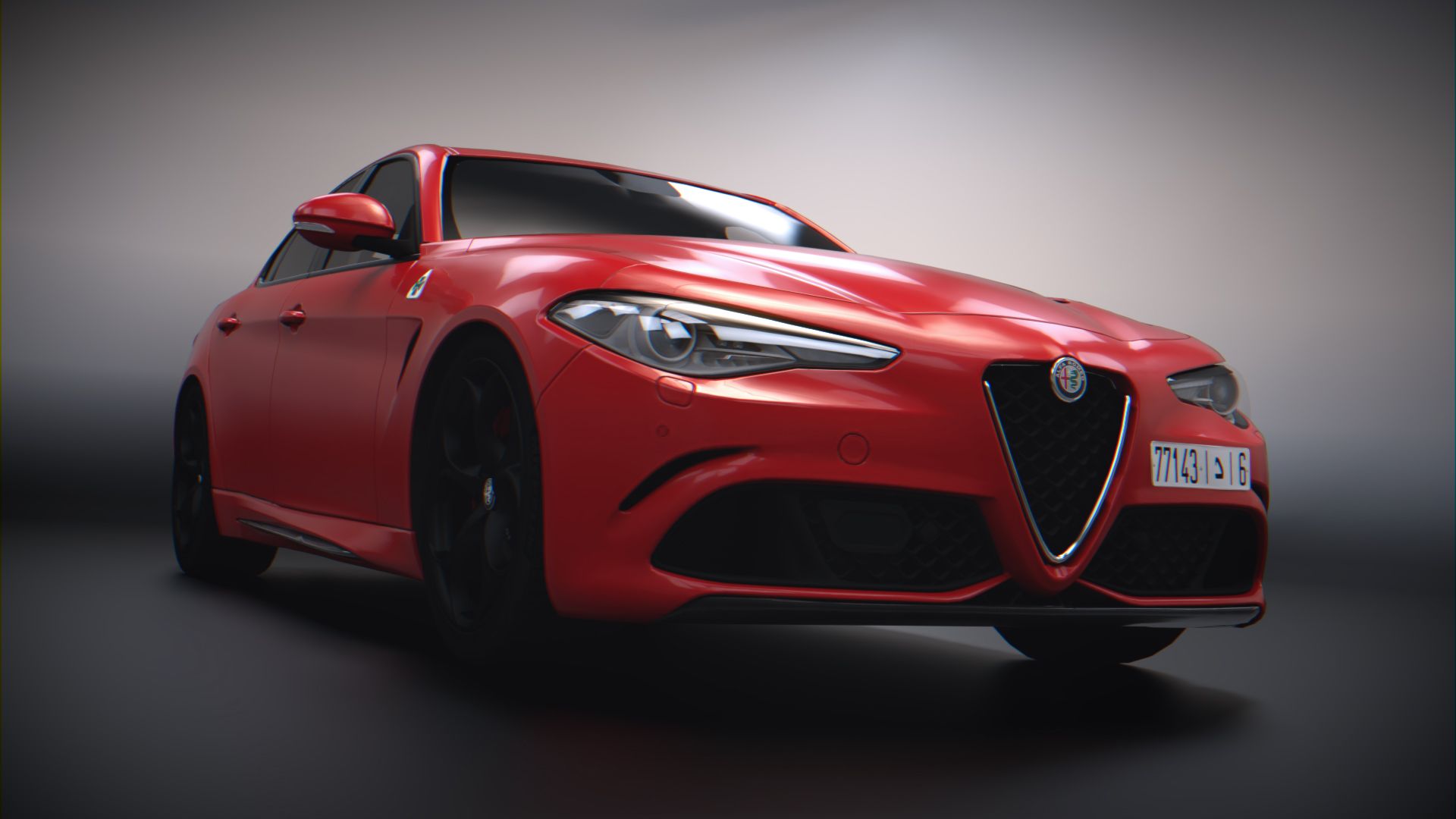
1. **Alfa Romeo Giulia Quadrifoglio**The Alfa Romeo Giulia Quadrifoglio burst onto the scene as a fan favorite, quickly establishing itself as a guaranteed future classic. Renowned for its powerful V6 engine and superb handling, it represented a glorious return to form for Alfa Romeo, marrying Italian passion with genuine high-performance capabilities. Its aggressive styling and engaging driving dynamics captured the hearts of enthusiasts who craved something truly special and distinctly European.
However, even this celebrated machine could not escape the industry’s inexorable march towards electrification. The V6 model of the Giulia Quadrifoglio was already discontinued in 2024, a clear signal of Alfa Romeo’s strategic pivot. This move sees the brand aligning more closely with its Stellantis siblings, embracing electric platforms that promise a different, albeit potentially potent, kind of performance for the future.
The loss of the Giulia Quadrifoglio’s V6 engine leaves a void that will be hard to fill for many. Its discontinuation underscores how even critically acclaimed, segment-defining combustion-engine sports sedans—which often share much of their DNA with pure sports cars—are succumbing to the broader shift in automotive manufacturing. The future, it seems, demands an electric heart, even from the most passionate of Italian marques.
For enthusiasts, the Giulia Quadrifoglio offered a visceral driving experience, characterized by its sharp steering, balanced chassis, and the intoxicating roar of its Ferrari-derived V6. It was a car that dared to challenge the established German order with an emotional intensity that few could match. Its departure highlights the growing pressure on automakers to prioritize efficiency and new energy vehicle development over traditional performance powertrains, even if it means retiring beloved icons.
Car Model Information: 2023 MINI Hardtop Cooper
Name: Alfa Romeo Quadrifoglio
Logo: Alfa-romeo-quadrifoglio-logo.png
LogoCaption: Quadrifoglio logo introduced in June 2015
Type: Marque
Industry: Automotive industry
Foundation: [object Object]
Owner: Stellantis
Parent: Alfa Romeo
Homepage: www.alfaromeo.com/quadrifoglio
Categories: Alfa Romeo, Alfa Romeo in Formula One, Alfa Romeo in motorsport, Articles containing Italian-language text, Articles with short description
Summary: The Quadrifoglio (Italian for ‘four-leaf clover’; pronounced [kwadriˈfɔʎʎo]) is the brand used by the Italian auto manufacturer Alfa Romeo to indicate a high performance model. The Quadrifoglio is usually placed on the side panels of the car, above or behind the front wheels—on the front wings in the case of modern vehicles. The logo consists of a green four-leaf clover contained in a triangle.
Get more information about: Alfa Romeo Quadrifoglio
Buying a high-performing used car >>>
Brand: Alfa Romeo Model: Giulia Quadrifoglio
Price: $26,490 Mileage: 27,389 mi.
Read more about: 8 Luxury Sedans with Sky-High Maintenance Costs: What Owners Need to Know Before Buying

2. **Audi A5 Coupe/Convertible**Audi’s A5 coupe and convertible models, with their elegant lines and sophisticated German engineering, have long been a staple for buyers seeking a blend of sportiness and luxury. These vehicles offered a more stylish alternative to their sedan counterparts, providing a refined driving experience coupled with Audi’s renowned Quattro all-wheel-drive system in many configurations. They represented a practical yet engaging option within the premium sports coupe segment.
The brand is currently in the process of phasing out these two-door variants as it embarks on a significant realignment of its product lineup. This strategic refocusing is a direct response to evolving market demands and the increasing emphasis on electric mobility. The A5 nameplate itself is not vanishing entirely but will transition to a four-door sedan starting in 2025, effectively absorbing the role previously held by the A4.
This rebranding and reorientation signify Audi’s broader move away from dedicated two-door coupes and convertibles in favor of more versatile and family-friendly body styles, or fully electric offerings. The context even suggests that the A4 may become a fully electric model, further illustrating the brand’s commitment to an electrified future. For those who appreciated the A5’s classic coupe silhouette or open-top motoring, this shift is a profound loss.
The A5 coupe and convertible provided a gateway into Audi’s performance world, offering a balance of everyday usability and engaging dynamics. While perhaps not as extreme as a dedicated sports car, they embodied a sophisticated approach to sporty motoring. Their discontinuation, in favor of a four-door sedan interpretation and electrified models, reflects a pragmatic decision by Audi to cater to a changing consumer base that increasingly values practicality and sustainability alongside performance.
Car Model Information: 2025 Audi A5 Sportback 45 S line quattro Premium
Name: Audi A5
Caption: Audi A5 B10, 2024
Manufacturer: Audi AG
Production: 2007–present
Layout: Front-engine, front-wheel-drive layout
Class: Compact executive car
Related: Audi A4
Categories: 2010s cars, 2020s cars, All-wheel-drive vehicles, Articles with short description, Audi vehicles
Summary: The Audi A5 is a series of compact executive and grand touring coupé cars produced by the German automobile manufacturer Audi since June 2007. The A5 range also includes the coupe, cabriolet, and “Sportback”—a five-door liftback with a fastback roofline—derived from the Audi A4 saloon and estate models.
Under Audi’s internal platform numbering convention, the A5 is a member of the B-platform series of vehicles, sharing its platform designation with the A4 saloon and Avant. The first generation A5 (Type 8T) belongs to the B8 family, while the second-generation model (Type 8W6) is based on the B9. Both generations are derived from the Volkswagen MLB (Modular Longitudinal Matrix) architecture.
Get more information about: Audi A5
Buying a high-performing used car >>>
Brand: Audi Model: A5
Price: $35,787 Mileage: 28,395 mi.
Read more about: Beyond the Hype: 12 Underestimated Coupes That Quietly Redefined Value and Performance
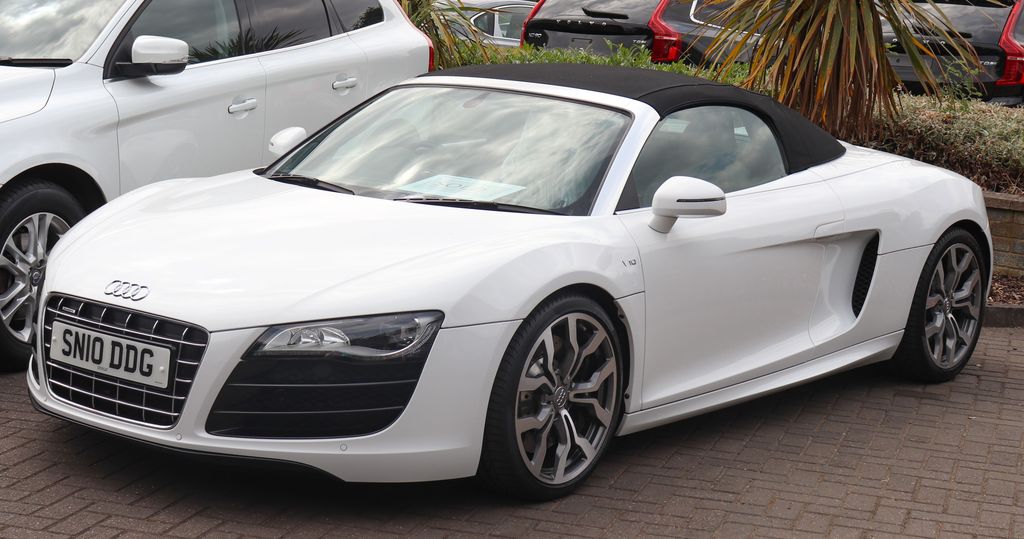
3. **Audi R8**The Audi R8 stands as a monument to automotive engineering, particularly cherished for being one of the last naturally aspirated V10 engines in production. Since its inception, the R8 has been celebrated for its exquisite design, driver-focused cockpit, and, most notably, its breathtaking Lamborghini-like performance. It was a supercar that married exotic capabilities with Audi’s legendary build quality and everyday usability.
Its discontinuation, set to occur by the end of 2025, marks a truly poignant moment for the automotive world. The R8’s departure signifies the end of an era for Audi’s high-performance, gas-powered sports cars, and indeed, for naturally aspirated engines in the supercar segment. In a world increasingly dominated by forced induction and electrification, the R8’s howling V10 represented a raw, unadulterated symphony that few other vehicles could replicate.
For enthusiasts, the R8 was more than just a car; it was an experience. The immediate throttle response, the linear power delivery, and the stratospheric redline of that glorious V10 created an unparalleled connection between driver and machine. Its mid-engine layout and sophisticated Quattro all-wheel-drive system ensured tenacious grip and confidence-inspiring handling, making it both incredibly fast and remarkably accessible.
The decision to retire the R8 is a clear indicator of the sweeping changes impacting even the highest echelons of performance motoring. As Audi, like many other manufacturers, shifts its focus entirely towards electric vehicles, the R8’s V10 simply no longer fits into the future vision. It’s a sad farewell to a true icon, whose legacy will be remembered for its distinctive design, incredible performance, and that unforgettable, naturally aspirated soundtrack.
Car Model Information: 2018 Audi R8 5.2 V10
Caption: Audi R8 V10 Plus (Type 4S)
Manufacturer: Audi
Production: June 2006 – March 2024,(45,949 Units)
Class: Sports car
BodyStyle: coupé
Layout: Longitudinal engine,Mid-engine design,rear-wheel-drive
Sp: uk
ModelYears: 2007–2024
Categories: 2010s cars, 2020s cars, All articles with unsourced statements, Articles with short description, Articles with unsourced statements from March 2019
Summary: The Audi R8 is a mid-engine, 2-seater sports car, which uses Audi’s trademark quattro permanent all-wheel drive system. It was introduced by the German car manufacturer Audi AG in 2006. Production ended in the first quarter of 2024.
The car is exclusively designed, developed, and manufactured by Audi AG’s private subsidiary company manufacturing high performance automotive parts, Audi Sport GmbH (formerly quattro GmbH), and was inspired by the Lamborghini Gallardo albeit the second generation is built using the Huracán platform. The fundamental construction of the R8 is based on the Audi Space Frame, and uses an aluminium monocoque which is built using space frame principles. The car is built by Audi Sport GmbH in a newly renovated factory at Audi’s ‘aluminium site’ at Neckarsulm in Germany. At the time it was introduced in 2006, the R8 became the first production car with full-LED headlamps.
Get more information about: Audi R8
Buying a high-performing used car >>>
Brand: Audi Model: R8
Price: $134,995 Mileage: 16,702 mi.
Read more about: Navigating the Shifting Tides: Why Classic Cars Face an Uncertain Future and How Savvy Collectors are Securing Their Legacy
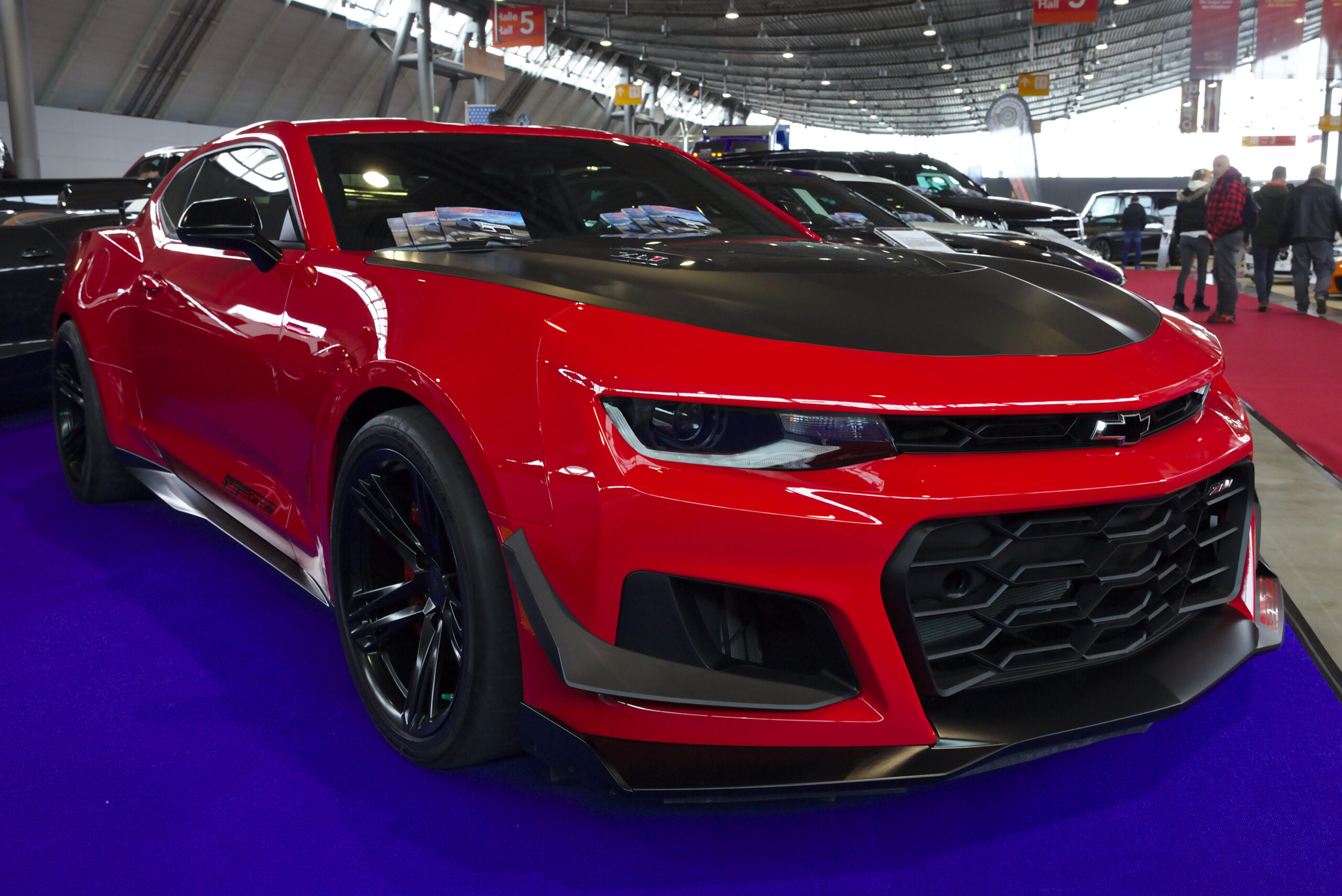
4. **Chevrolet Camaro**The Chevrolet Camaro, an American icon synonymous with muscle car heritage and raw power, is unfortunately saying goodbye by the end of 2024. For generations, the Camaro has embodied accessible performance, delivering thrilling V8 engines and a quintessential American driving experience to enthusiasts across the globe. Its aggressive styling and powerful presence have made it a beloved fixture on roads and racetracks alike.
This discontinuation follows an earlier strategic decision to phase out the turbocharged four-cylinder version last year, signaling a gradual but inevitable winding down of the entire model line. While the four-cylinder offered a more economical entry point, it was the roaring V8 engines, especially those paired with manual transmissions, that truly cemented the Camaro’s legendary status among its loyal fanbase.
The Camaro’s appeal was always rooted in its unpretentious approach to performance. It offered a brute-force charm, combined with surprisingly capable chassis dynamics in its later iterations, that allowed it to compete admirably against its domestic and international rivals. The visceral experience of hearing that V8 rumble to life and feeling its immense torque push you back in the seat is something that will be deeply missed.
Its retirement reflects a broader market trend where consumer preference has decisively shifted away from coupes and sedans, even performance-oriented ones, towards SUVs and trucks. Chevrolet, like many automakers, must adapt its portfolio to these new demands. The void left by the Camaro will be profound, as it represents the loss of a truly iconic nameplate that has defined American performance for over half a century.
Car Model Information: 2018 Chevrolet Camaro 1SS
Name: Chevrolet Camaro
Manufacturer: Chevrolet
Production: 1966–2002,2009–2023
ModelYears: 1967–2002,2010–2024
Class: Pony car
BodyStyle: coupe,convertible
Platform: GM F platform,GM Zeta platform,GM Alpha platform
Layout: Front-engine, rear-wheel-drive layout
Categories: 1970s cars, 1980s cars, 1990s cars, 2+2 coupés, 2000s cars
Summary: The Chevrolet Camaro is a mid-size American automobile manufactured by Chevrolet, classified as a pony car. It first went on sale on September 29, 1966, for the 1967 model year and was designed to compete with the Ford Mustang. The Camaro shared its platform and major components with the Firebird, produced by General Motors’ Pontiac division that was also introduced for the 1967 model year.
Four distinct generations of the Camaro were developed before production ended in 2002. The nameplate was revived on a concept car that evolved into the fifth-generation Camaro; production started on March 16, 2009.
Production of the sixth generation of the Camaro ended in December 2023, for the 2024 model year.
Get more information about: Chevrolet Camaro
Buying a high-performing used car >>>
Brand: Chevrolet Model: Camaro
Price: $33,988 Mileage: 49,199 mi.
Read more about: Remember Them? These Small Sedans Absolutely Crushed It as Performance Icons.

5. **Jaguar F-Type**The Jaguar F-Type, a modern classic of British sports car engineering, is set to cease production in 2024, marking another significant loss for enthusiasts. Since its introduction, the F-Type has captivated with its distinctive styling, a contemporary interpretation of Jaguar’s rich sports car lineage, and its genuinely visceral driving experience. It quickly became a favorite for those seeking elegance, power, and an unmistakable exhaust note.
Its design, particularly the long hood and muscular rear haunches, harked back to legendary Jaguars of the past while maintaining a thoroughly modern aesthetic. But beyond its stunning looks, the F-Type delivered on the promise of a true performance machine, especially in its powerful V8-powered iterations. The supercharged engines provided instant thrust and a captivating soundtrack that was uniquely Jaguar.
However, the F-Type’s demise is a direct consequence of Jaguar’s ambitious and exclusive shift to an all-electric vehicle future. The brand has committed to becoming an all-electric luxury brand, leaving no room in its future portfolio for its iconic V8-powered sports car. This bold move highlights how rapidly even storied manufacturers are pivoting away from internal combustion engines to embrace sustainable mobility.
For admirers of the F-Type, its discontinuation is a bittersweet moment. It was a vehicle that perfectly blended luxury, performance, and a strong sense of occasion. The loss of its characterful V8 and the absence of a direct combustion-engined successor underscore the dramatic changes sweeping through the automotive industry. The F-Type will be remembered as a beautiful, powerful, and truly British sports car from an era that is rapidly coming to a close.
Car Model Information: 2022 Jaguar F-TYPE P450 R-Dynamic AWD Automatic
Name: Jaguar F-Type (X152)
Caption: Jaguar F-Type R-Dynamic coupé
Manufacturer: Jaguar Land Rover
ModelCode: X152
Aka: Lister LFT
Production: 2013–2024
ModelYears: 2014–2024
Assembly: Birmingham,England
Designer: Ian Callum,César Pieri (Project 7)
Class: Sport car
BodyStyle: unbulleted list
Platform: Jaguar Land Rover car platforms#D6a
Related: Jaguar C-X16
Layout: Front-engine, rear-wheel-drive layout
Engine: ubl
Powerout: ubl
Abbr: on
Transmission: ubl
Wheelbase: Convert
Length: 4470 mm
Width: 1923 mm
Height: 1308 mm
Weight: convert
Sp: uk
Predecessor: Jaguar XK
Categories: All Wikipedia articles written in British English, All articles with failed verification, All articles with unsourced statements, Articles with failed verification from April 2025, Articles with short description
Summary: The Jaguar F-Type (X152) is a series of two-door, two-seater sports cars manufactured by British car manufacturer Jaguar Land Rover under their Jaguar Cars marque from 2013 to 2024. The car’s JLR D6a platform is based on a shortened version of the XK’s platform. It is the so-called “spiritual successor” to the E-Type.
The car was launched initially as a 2-door soft-top convertible, with a 2-door fastback coupé version launched in 2013. The F-Type underwent a facelift for the 2021 model year. It was unveiled in December 2019, featuring a significantly restyled front end and dashboard, and simplified drivetrain options. Jaguar announced that the F-Type will be discontinued after the 2024 model year. Production ended in June 2024, by which time 87,731 examples had been built.
Get more information about: Jaguar F-Type
Buying a high-performing used car >>>
Brand: Jaguar Model: F-Type
Price: $64,440 Mileage: 7,585 mi.
Read more about: Your Car, Their Rules? 15 Things Every Car Enthusiast Judges About Your Vehicle
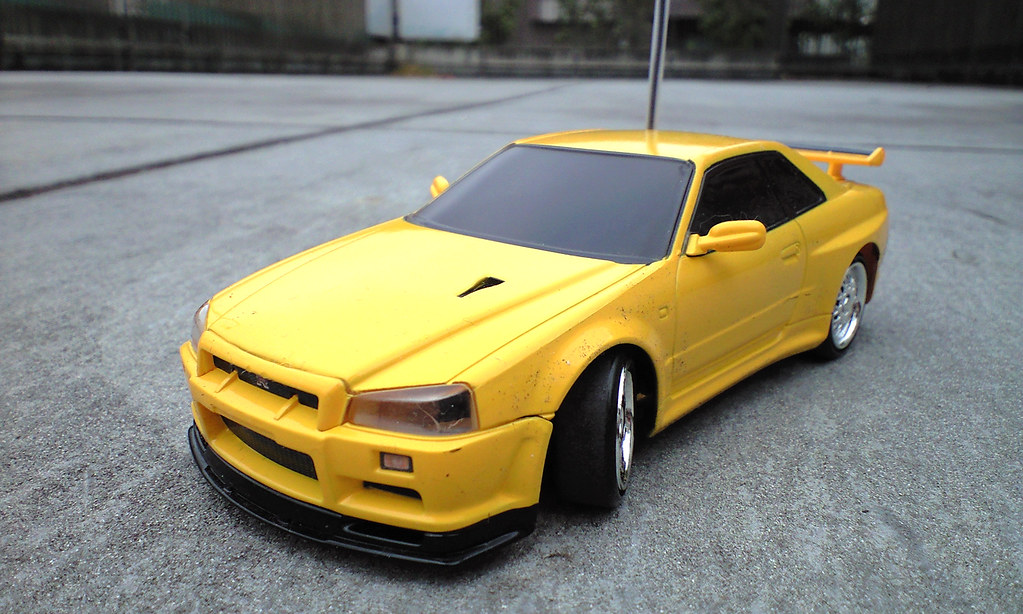
6. **Nissan GT-R**The Nissan GT-R, affectionately known as “Godzilla,” has cultivated an impressive legacy over its 17-year production run, finally bowing out at the end of 2024. This machine redefined what a sports car could be, offering monstrous performance that could humble far more expensive supercars. It achieved this through a relentless focus on advanced technology, all-wheel drive, and a powerful twin-turbocharged V6 engine.
The R35 GT-R, launched in 2007, was a game-changer. It brought supercar-level acceleration and handling within the reach of a broader audience, demonstrating Nissan’s engineering prowess. Its sophisticated ATTESA E-TS all-wheel-drive system, dual-clutch transmission, and highly tunable VR38DETT engine made it a force to be reckoned with on track and street alike, earning its legendary nickname for its destructive capabilities against competitors.
While its design evolved over its long life, the core essence of the GT-R remained consistent: unapologetic performance. Special Final Edition models are being released to commemorate its departure, ensuring that its legacy is properly honored. Enthusiasts will undoubtedly snap these up, understanding they represent the culmination of an engineering marvel that pushed boundaries for nearly two decades.
The rumored development of a successor offers a glimmer of hope, but it’s unlikely to retain the raw, gasoline-powered heart that defined the R35. As the industry shifts, the GT-R’s retirement highlights the increasing difficulty of maintaining a high-performance combustion-engine platform for such an extended period. Its departure closes a significant chapter in Japanese automotive history, leaving behind a legendary reputation for performance and technological innovation.
Continuing our in-depth analysis of the automotive world’s evolving landscape, we now turn our attention to five more cherished sports cars and performance-oriented models that are, regrettably, making their final curtain call. These vehicles, each with their own unique charm and engineering prowess, underscore the profound shifts occurring across the industry. From luxury sedans caught in an electrification wave to quirky hatchbacks that delighted driving enthusiasts, their stories further illustrate the complex interplay of market forces, consumer demands, and regulatory mandates reshaping what we drive, and indeed, what we can even buy.
Read more about: Vanished From The Road: 14 Discontinued Cars That Became Coveted Collectibles — And A Few That Just Stayed Junk
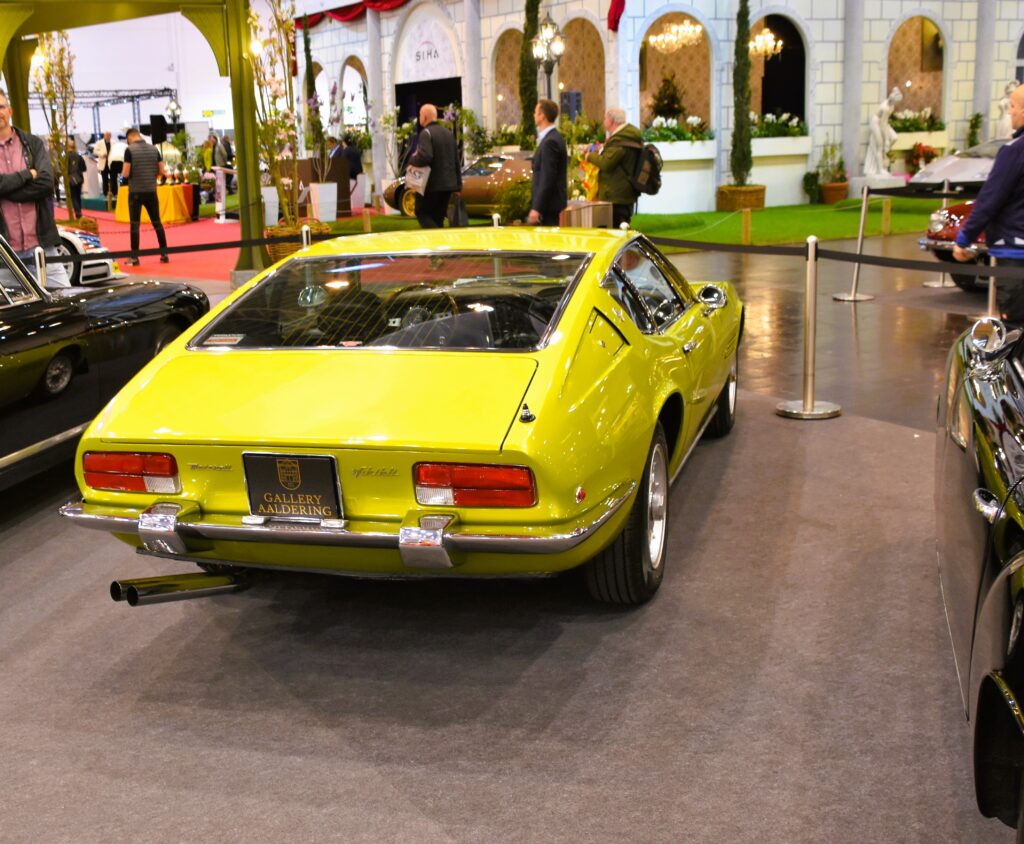
7. **Maserati Ghibli**The Maserati Ghibli, a name synonymous with Italian luxury and performance, is another casualty of the automotive industry’s rapid pivot. For years, the Ghibli offered a distinctive blend of elegant styling, a rich heritage, and formidable engine options, including powerful V6 and V8 units that delivered a truly exhilarating driving experience. It stood as an accessible entry point into the world of Maserati, promising a level of prestige and emotional connection often absent in its German rivals.
However, the Ghibli’s journey is concluding in 2024, a direct consequence of Maserati’s integration into the Stellantis group and its ambitious electric vehicle transition. This strategic realignment prioritizes new energy vehicles, making traditional combustion-powered luxury sedans like the Ghibli increasingly unsustainable within the brand’s forward-looking portfolio. Its departure marks a significant shift away from the classic Italian luxury sedan, signaling a future where Maserati’s distinctive roar will likely be replaced by the silent, powerful hum of electric motors.
The Ghibli was more than just a car; it was a statement. It combined a sleek, coupé-like silhouette with the practicality of a four-door sedan, carving out a niche for those who desired both dynamism and sophistication. Its distinctive grille, luxurious interior, and the captivating sound of its engine provided a sensory experience that few other cars could match. Enthusiasts cherished the Ghibli for its character and the unique flair it brought to the executive sedan segment, making its planned replacement by an electric Quattroporte a bittersweet evolution.
While the future holds promises of potent electric performance for Maserati, the Ghibli’s discontinuation underlines the sweeping impact of electrification across even the most storied and tradition-bound marques. It’s a testament to how quickly the industry is adapting, even if it means retiring beloved models that once defined a brand’s essence. The Ghibli will be remembered as a symbol of Maserati’s rich past and the exciting, albeit different, path it is now forging.
Car Model Information: 2015 Maserati Ghibli S Q4
Name: Maserati Ghibli
Caption: 2018 Maserati Ghibli GranLusso
Manufacturer: Maserati
Assembly: Modena,Grugliasco,Turin
Class: Grand tourer,Executive car
BodyStyle: fastback,coupé,Roadster (automobile),Sedan (automobile)
Production: AM115: 1967–1973,AM336: 1992–1998,M157: 2013–2023
Categories: 1970s cars, 1990s cars, 2010s cars, Articles with short description, CS1 Italian-language sources (it)
Summary: Maserati Ghibli is the name of three different cars produced by Italian automobile manufacturer Maserati: the AM115, a V8 grand tourer from 1967 to 1973; the AM336, a V6 twin-turbocharged coupé from 1992 to 1998; and the M157, an executive saloon from 2013 to 2023.
Ghibli is the Libyan Arabic name for the hot dry south-westerly wind of the Libyan desert.
Get more information about: Maserati Ghibli
Buying a high-performing used car >>>
Brand: Maserati Model: Ghibli
Price: $16,498 Mileage: 74,452 mi.
Read more about: The Costly Truth: 14 Classic Cars That Are Simply Not Worth Restoring for the Savvy Enthusiast

8. **Mini Clubman**The Mini Clubman, a charming blend of quirky design, practical functionality, and spirited driving dynamics, is another model bidding farewell by 2025. Over its various iterations, the Clubman stood out with its distinctive split rear doors and elongated profile, offering a more versatile and spacious alternative within the compact segment while retaining Mini’s signature go-kart-like handling. It appealed to a unique demographic that valued both British eccentricity and engaging performance.
Especially in its John Cooper Works (JCW) trim, the Clubman transformed into a truly hot hatch, delivering impressive power, aggressive styling, and a thrilling exhaust note. The JCW variants were particularly beloved by enthusiasts who appreciated a performance-oriented car that didn’t compromise on practicality, offering enough space for passengers and cargo while still delivering an adrenaline-fueled driving experience. It was a testament to Mini’s ability to inject fun into everyday motoring.
Mini’s decision to discontinue the Clubman stems from a strategic shift towards focusing on more family-friendly models, such as the Countryman, and aligning with the industry’s broader electrification trend. This move suggests a prioritization of larger, more mainstream crossovers and electric vehicles over niche, though highly charismatic, models like the Clubman. It’s a pragmatic business decision reflecting evolving consumer preferences, even if it means saying goodbye to a model with significant character.
The Clubman’s demise highlights a growing trend where niche vehicles, even those with a passionate following, are struggling to find their place in an increasingly streamlined and electrified automotive landscape. Its quirky design and unique proposition will be missed by those who championed its blend of practicality, style, and performance. The Mini Clubman was a standout in its segment, proving that utility and driving enjoyment don’t have to be mutually exclusive.
Car Model Information: 2017 MINI Clubman Cooper ALL4
Categories: All article disambiguation pages, All disambiguation pages, Disambiguation pages, Short description is different from Wikidata
Summary: Mini Clubman may refer to:
BL Mini Clubman, the 1969–1980 British Leyland Mini Clubman
Morris Mini Clubman, the Australian version of the BL Mini Clubman
Mini Clubman (2007), the BMW Mini Clubman 2007–2024
Get more information about: Mini Clubman
Buying a high-performing used car >>>
Brand: Mini Model: Clubman
Price: $10,995 Mileage: 88,775 mi.
Read more about: Navigating the Shifting Tides: Why Classic Cars Face an Uncertain Future and How Savvy Collectors are Securing Their Legacy
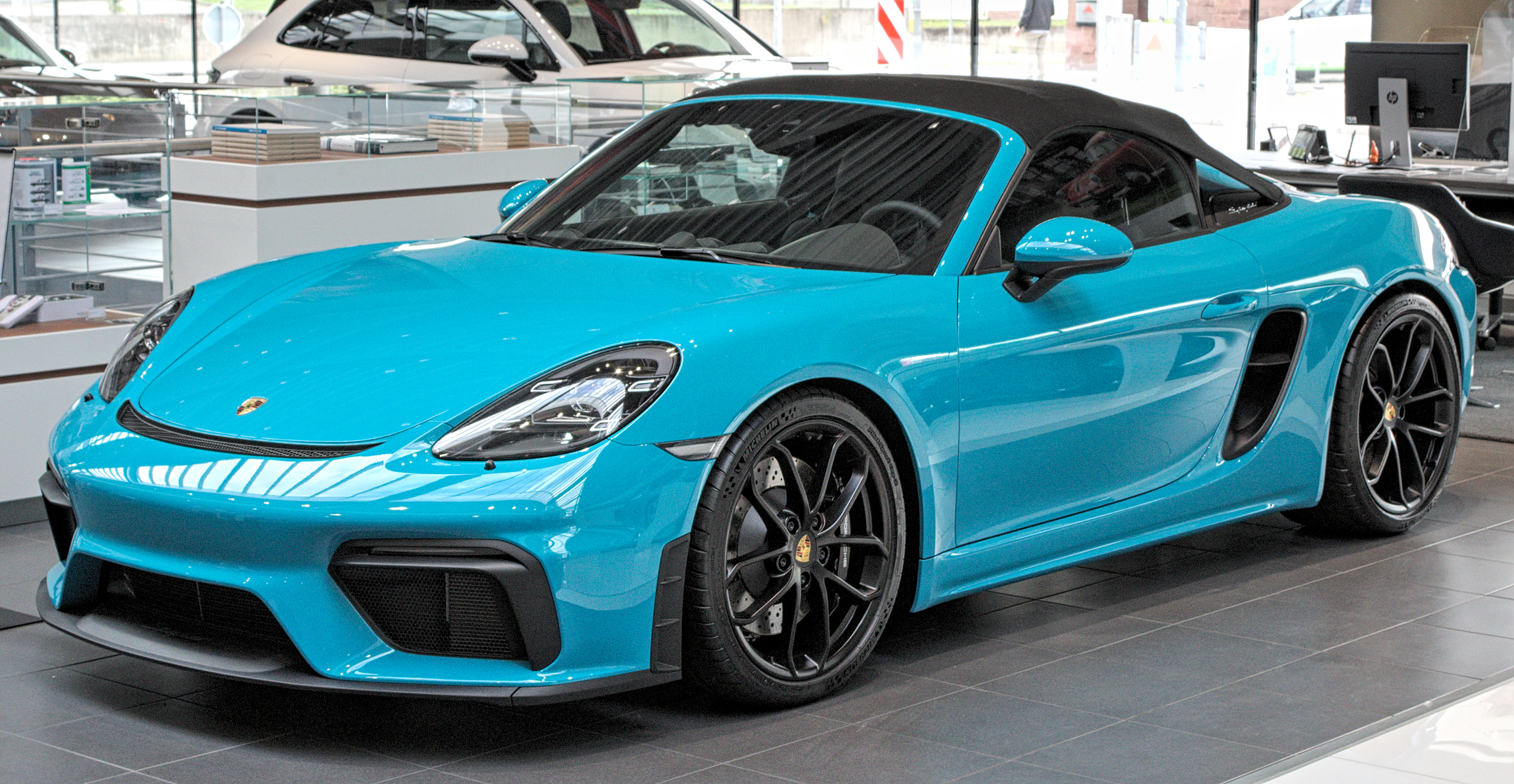
9. **Porsche 718 Cayman/Boxster**The Porsche 718 Cayman and Boxster, the quintessential mid-engine sports cars from Stuttgart, are facing an inevitable transition, with their gas-powered versions being phased out due to tightening emissions regulations. Europe has already bid farewell to these beloved combustion models, and the U.S. market is poised to follow suit, signaling the dawn of an all-electric replacement. This shift marks a profound moment for Porsche, a brand built on the legacy of iconic internal combustion sports cars.
For decades, the 718 models, and their predecessors, have been celebrated for their sublime chassis balance, precise steering, and exhilarating driving dynamics. The Boxster, with its open-top allure, and the Cayman, a rigid, performance-focused coupe, both offered an unadulterated connection to the road that few rivals could emulate. Their turbocharged four-cylinder and naturally aspirated six-cylinder engines, in earlier generations, delivered a visceral soundtrack and potent performance, making them a benchmark in the pure sports car segment.
The looming discontinuation of the gas-powered 718s underscores the relentless march of regulatory pressures, particularly stringent emissions standards, which are forcing even high-performance manufacturers to reconsider their powertrain strategies. While an all-electric 718 successor promises a new era of performance, enthusiasts will undoubtedly mourn the loss of the current models’ engaging combustion engines and the unique sensory experience they provided. The direct response, the rev-happy nature, and the distinct sound of a Porsche flat-four or flat-six engine are irreplaceable elements of their charm.
This shift reflects Porsche’s broader commitment to electrification, seen across its lineup with models like the Taycan. However, for many purists, the 718 represented the accessible heart of Porsche’s sports car philosophy – a driver-focused machine that embodied balance and agility. The transition to electric will certainly bring new levels of torque and acceleration, but the intangible connection forged by a finely tuned combustion engine will be a profound loss for a generation of enthusiasts.
Car Model Information: 2021 Toyota Tacoma SR
Name: unbulleted list
Caption: Porsche Boxster Spyder (718)
Manufacturer: Porsche
Aka: unbulleted list
Production: unbulleted list
Assembly: unbulleted list
Class: Sports car
BodyStyle: unbulleted list
Related: unbulleted list
Layout: Rear mid-engine, rear-wheel drive layout
Predecessor: Porsche 968
Categories: All Wikipedia articles written in British English, All articles needing additional references, All articles with dead external links, All articles with unsourced statements, Articles needing additional references from August 2025
Summary: The Porsche Boxster and Cayman are mid-engine two-seater sports cars manufactured and marketed by German automobile manufacturer Porsche across four generations—as a two-door, two-seater roadster (Boxster) and a three-door, two-seater fastback coupé (Cayman).
The first generation Boxster was introduced in 1996; the second generation Boxster and the Cayman arrived in late 2005; and the third generation launched in 2012. Since the introduction of the fourth generation in 2016, the two models have been marketed as the Porsche 718 Boxster and Porsche 718 Cayman.
The nameplate Boxster is a portmanteau of boxer, a reference to its flat or boxer engine, and Speedster, a nod to the original Porsche Speedster of the 1950’s. The nameplate Cayman is an alternative spelling of caiman, a member of the alligator family.
In May 2025 Porsche North America confirmed the rumours that global “production for all current 718 Boxster and 718 Cayman variants, including RS models, is scheduled to end in October of” 2025. Porsche CEO Oliver Blume has confirmed future production of full-electric replacements but said they will arrive in the “medium term.”
Get more information about: Porsche Boxster and Cayman
Buying a high-performing used car >>>
Brand: Porsche Model: 718 Cayman/Boxster
Price: $32,104 Mileage: 63,868 mi.
Read more about: 15 Iconic Nameplates: Classic Car Brands Fueling the Electric Revolution
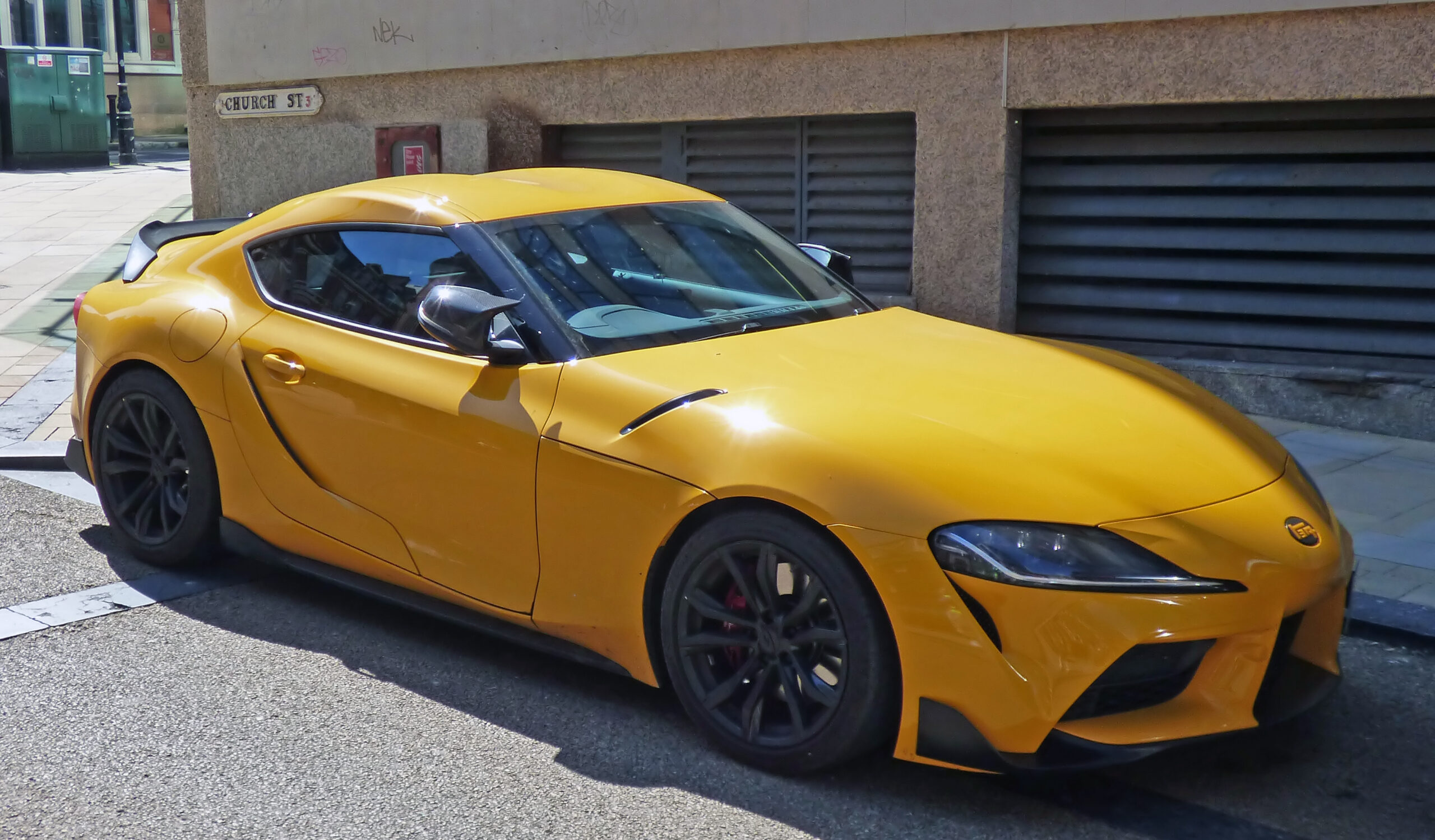
10. **Toyota GR Supra 2.0**The Toyota GR Supra, a nameplate steeped in Japanese performance lore, made a highly anticipated return, thrilling enthusiasts with its modern interpretation of a classic. However, it appears that the more accessible 2.0-liter four-cylinder variant is quietly exiting the lineup, leaving only the more popular and powerful six-cylinder models available for 2025. This consolidation reflects consumer preference and Toyota’s strategy to streamline its sports car offerings.
Upon its reintroduction, the GR Supra offered a compelling package, blending BMW-derived engineering with Toyota’s distinctive styling and performance tuning. The 2.0-liter turbocharged four-cylinder model, while offering a more affordable entry point, still delivered respectable performance, agile handling, and a genuinely engaging driving experience. It served as a gateway drug for many into the world of serious sports cars, providing a balanced chassis and responsive power that made it a joy on twisty roads.
The decision to discontinue the four-cylinder Supra is a direct response to market trends, where buyers of a halo sports car like the Supra often gravitate towards the most potent and iconic powertrain available – in this case, the turbocharged 3.0-liter inline-six. While the 2.0-liter provided a lighter front end and a slightly different dynamic, the allure of the six-cylinder’s greater power and historical connection proved to be the stronger draw for the majority of enthusiasts. This kind of product optimization is a common practice for automakers aiming to maximize efficiency and profitability within specific segments.
For those who appreciated the 2.0-liter Supra for its slightly lighter weight, potentially better balance, and more wallet-friendly price tag, its departure is a disappointment. It represented a different flavor of Supra, one that was perhaps more attuned to nimble, spirited driving than raw straight-line speed. Its quiet exit signifies a refinement of the Supra’s market positioning, firmly establishing the six-cylinder as the definitive variant for the foreseeable future.
Car Model Information: 2024 Buick Enclave Premium FWD
Name: Toyota GR Supra
Manufacturer: Toyota
ModelCode: unbulleted list
Production: March 2019 – present
ModelYears: 2020–present
Assembly: Graz,Styria
Designer: Nobuo Nakamura (project chief designer)
Class: Sports car
BodyStyle: fastback,coupe
Layout: Front-engine, rear-wheel drive layout
Platform: BMW#Industry collaboration
Related: BMW Z4 (G29)
Engine: unbulleted list
Abbr: on
Powerout: unbulleted list
Transmission: unbulleted list
Wheelbase: 2470 mm
Length: 4380 mm
Width: 1865 mm
Height: convert
Weight: convert
Predecessor: Toyota Supra (A80)
Categories: 2020s cars, All Wikipedia articles written in British English, Articles with short description, CS1 German-language sources (de), CS1 Japanese-language sources (ja)
Summary: The Toyota GR Supra (model code J29/DB or A90/A91 for marketing purposes) is a sports car produced by Toyota since 2019. The fifth-generation Supra, the GR Supra was sold under and developed by Toyota Gazoo Racing (TGR) brand in collaboration with BMW. It is the successor of the A80 Supra, which ceased production in 2002.
The GR Supra rides on a platform developed by Toyota and BMW, with a short wheelbase, wide track, and low centre of gravity, that also underpins the G29 BMW Z4. Initially, BMW considered using a pre-existing platform of their own to underpin the new Supra, but chief engineer Tetsuya Tada declined. Both cars are manufactured at the Magna Steyr plant in Graz, Austria.
The fifth-generation Supra uses BMW model code conventions, designated as a J29 series with DB model codes. However, Toyota used the “A90” and “A91” code for promotional and marketing materials for the fifth-generation Supra to maintain continuity from previous Supra generations.
Get more information about: Toyota GR Supra
Buying a high-performing used car >>>
Brand: Toyota Model: GR Supra
Price: $29,997 Mileage: 37,000 mi.
Read more about: Unpacking Automotive Nightmares: The 14 Most Monumental and Costly Car Recalls in History
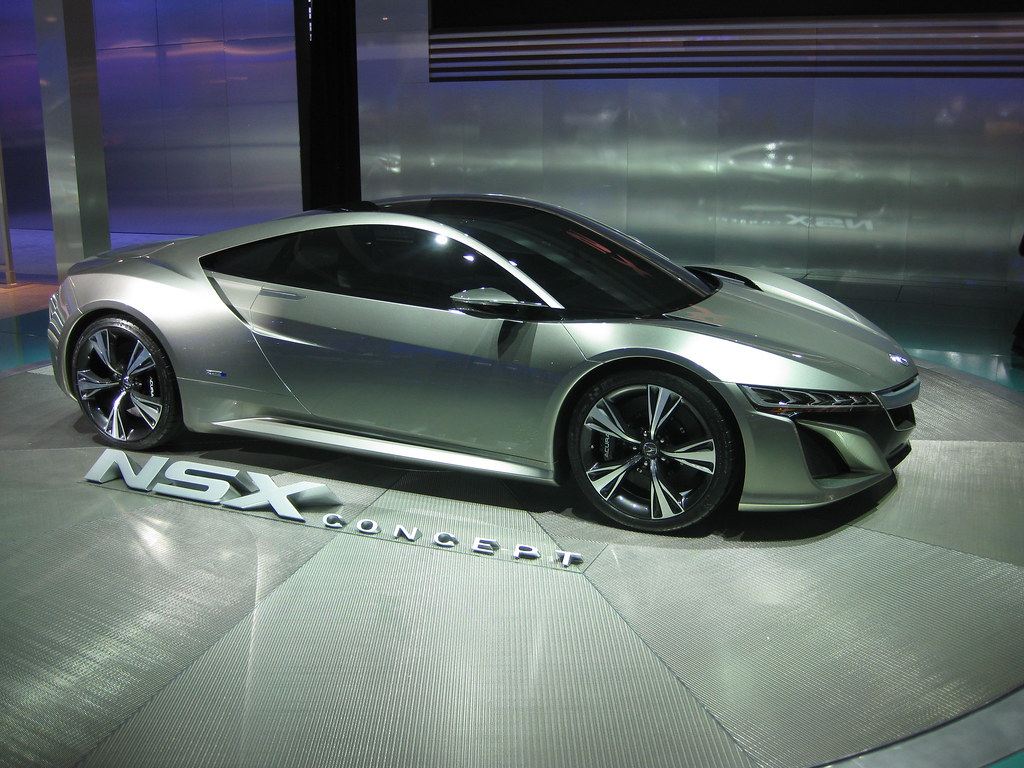
11. **Acura NSX**The Acura NSX, a supercar that dared to challenge the established European elite with a uniquely Japanese approach, is another icon that has, for now, completed its production run. The original NSX, known as the Honda NSX outside North America, revolutionized the supercar segment by proving that extreme performance could coexist with everyday usability and legendary Honda reliability. It was a driver’s car, meticulously engineered with a focus on balance, handling, and a high-revving naturally aspirated VTEC V6 engine.
After a remarkable 15-year first-generation run ending in 2005, Honda teased enthusiasts for years before finally bringing back the NSX in 2016. This second generation embraced cutting-edge hybrid power, combining a twin-turbocharged V6 with three electric motors to deliver blistering acceleration and sophisticated all-wheel-drive dynamics. It was a technological tour de force, once again aiming to redefine what a modern supercar could be, capable of hunting down its European rivals with renewed vigor and upholding its predecessor’s reputation for innovation.
Despite its engineering brilliance and stunning performance, the second-generation NSX struggled to capture the public’s imagination or achieve significant sales success. Many enthusiasts and critics, perhaps conditioned by traditional supercar narratives, never quite “understood” its hybrid powertrain or fully embraced its distinct personality compared to more conventional offerings. This lukewarm market reception ultimately led to its official retirement after the Type S bowed out in 2022, marking an end to its ambitious, albeit challenging, second chapter.
The NSX’s story is a poignant reminder that even groundbreaking vehicles with incredible capabilities can fall victim to market perceptions and evolving tastes. Its discontinuation leaves a significant void in Honda’s performance lineup, with no direct supercar successor currently offered. While rumors of a future return or a spiritual successor, perhaps in an electrified form like the teased Prelude, always swirl, the NSX, in its raw, VTEC V6 or complex hybrid forms, remains a testament to Honda’s audacious engineering spirit and its enduring pursuit of automotive excellence. It will be remembered as a car that was ahead of its time, twice over.
Car Model Information: 1992 Acura NSX Base
Name: Honda NSX
Caption: Acura NSX (first generation, NA2) along with some NA1 NSX cars
Manufacturer: Honda
Aka: Acura NSX (North America)
Production: 1990–2006 (NA1/2),2016–2022 (NC1/2)
Class: Sports car
ModelYears: 1991–2006,2017–2023
Categories: 2000s cars, 2010s cars, 2020s cars, 24 Hours of Le Mans race cars, All-wheel-drive vehicles
Summary: The Honda NSX (sold in North America as the Acura NSX) is a two-seater sports car manufactured by Honda over two generations. The first generation was produced from 1990 until 2006, whilst the second generation was made from 2016 to 2022. The first generation was introduced as a two-door coupé, with a two-door targa top variant later added, and has a rear mid-engine, rear-wheel-drive layout. The second generation is only a coupé, and has a rear mid-engine, all-wheel-drive layout. The first generation has a transversely-mounted naturally-aspirated engine with a V6 configuration, whilst the second generation has a twin-turbocharged V6 engine supplemented by multiple electric motors in a petrol-electric hybrid drivetrain.
The origins of the NSX can be traced back to 1984, with the HP-X (Honda Pininfarina eXperimental) concept, for a 3.0 L (180 cu in) V6 rear mid-engine, rear-wheel drive sports car. Honda, with the intention of meeting or exceeding the performance of the then V8 engine Ferrari range, committed to the project, aiming at both reliability and a lower price. The concept evolved and had its name changed to NS-X, which stood for “New”, “Sportscar” “eXperimental”, although the production model launched as the NSX.
Get more information about: Honda NSX
Buying a high-performing used car >>>
Brand: Acura Model: NSX
Price: $93,999 Mileage: 62,145 mi.
Read more about: Vanished From The Road: 14 Discontinued Cars That Became Coveted Collectibles — And A Few That Just Stayed Junk
The departure of these remarkable machines, from the howling V10 of the R8 to the revolutionary hybrid powertrain of the NSX, serves as a stark reminder of the automotive industry’s relentless pace of change. It’s a bittersweet farewell to a generation of sports cars that captured our imaginations and fueled our passion for driving. While the future promises new forms of performance, driven by electric innovation and evolving consumer demands, the distinct character and visceral thrill of these once-hot combustion-engine icons will forever hold a special place in the hearts of enthusiasts. As these legends fade into history, they leave behind not just a legacy of speed and style, but a profound understanding of how quickly an era can end, and a new one begin. This moment is not just about mourning what we’ve lost, but also about appreciating the incredible engineering and emotional connection these cars offered, ensuring their stories inspire future generations of gearheads.


